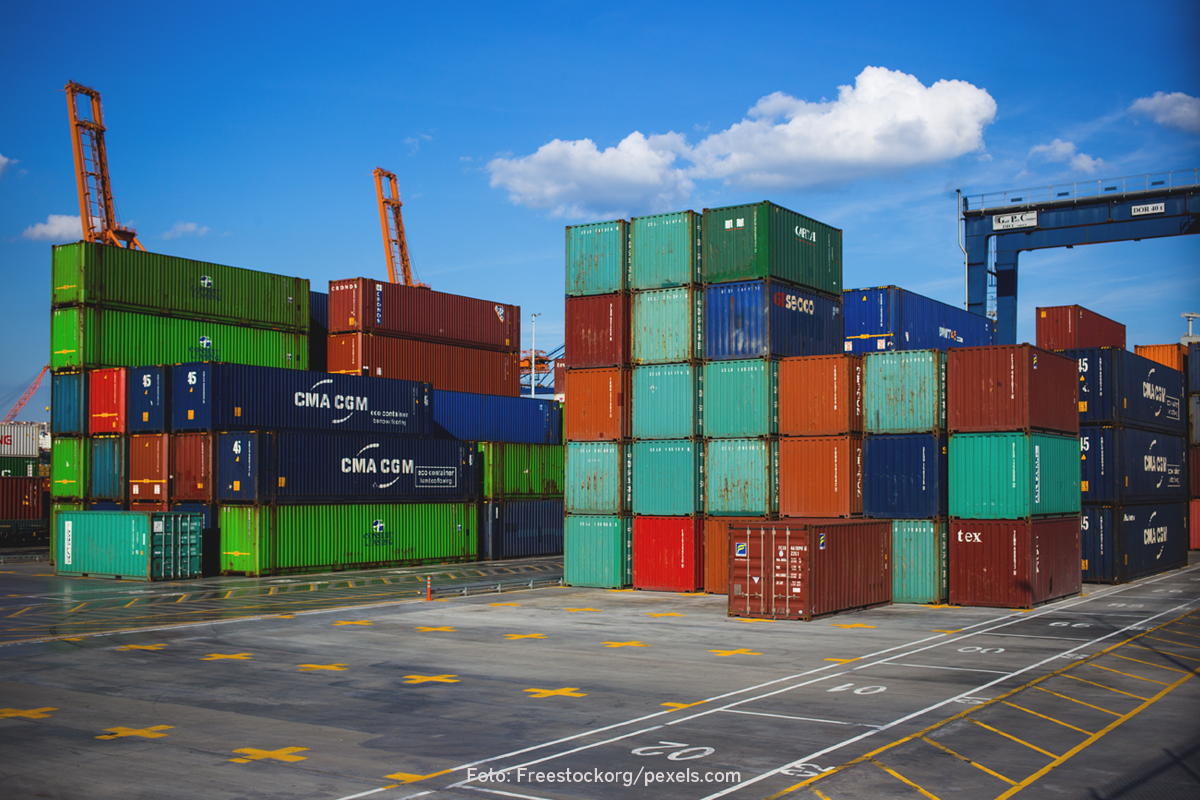Government Affirms the Determination of Customs Value of Imported Goods
Andrean Mailangkay,
Bambang Sabur,
Monday, 16 January 2023

Minister of Finance Sri Mulyani Indrawati emphasized that starting 1 January 2023, the determination of the customs value in import activities is the responsibility of the owner of the goods or the importer.
This is stated in the Regulation of the Minister of Finance (PMK) Number 144/PMK.04/2022 which amended the previous provisions regarding the determination of customs value through PMK Number 160/PMK.04/2010.
In this regulation, the government also redefines importers and owners of goods. What is meant by importers includes individuals, institutions or companies in the form of legal entities or non-legal entities that enter goods into the customs territory.
While the owner of the goods is the importer or the person who requests the importer to enter the goods and submitted in the import declaration.
Methods of Determining the Basic Customs Value
In determining the customs value, the importer or owner of the goods must refer to the transaction value of the imported goods, that is, the price that the buyer actually paid or should have paid to the seller, plus other costs or values that must be added, as long as such other costs or values have not been included in the price actually paid or should have been paid.
The costs or other values ??that should be added to the transaction value include:
First, costs paid by buyers in the process of import transactions, such as commissions and intermediary services (except purchase commissions), packaging costs for customs purposes and packing costs include material costs and packing labor wages.
Second, the value of goods and services (assist) supplied directly or indirectly by the buyer, includes:
- goods contained in imported goods such as materials, components, parts and similar goods.
- goods for production purposes such as tools, molds and similar items.
- materials used in the manufacture of goods
- engineering, development, artwork, design, planning and sketching done anywhere outside the customs territory.
Third, royalties and licensing fees. Royalties and license fees added to the customs value must meet three requirements, namely royalties and license fees that are conditions for the sale of imported goods.
In addition, the value of royalties and license fees can be attributed to imported goods or to goods for which there are intellectual property rights such as patents, trademarks and copyrights.
It should be noted, with the existence of new regulation, the mechanism for calculating royalties and license fees in determining customs value has changed. Previously, royalties and license fees became part of the customs value if they had been paid by the importer or owner of the goods.
Meanwhile, in the new regulation, it can be paid or not yet paid (payable) by the importer or owner of the goods.
Fourth, the value of proceeds, namely the value of each part of the proceeds or income obtained by the buyer, to be transfered directly or indirectly to the seller.This income is related to the sale, utilization or use of imported goods.
In this regulation, indicators are added that can be used to see the existence of proceeds, namely:
- carried out on work that is not done in the country;
- relatively unreasonable compared to the value of the services provided;
- does not provide benefits or advantages to the buyer directly; and/or
- based on the utilization and/or sales proceeds of the imported goods concerned.
Fifth, transportation costs to the port of import destination. In this regulation, if there is no real evidence or measurable objective data related to transportation costs, the norms in accordance with the country of origin of the shipment are used.
The applicable norm is based on the Freight on Board (FOB) value, which is 5% for goods imported from ASEAN countries; 10% for non-ASEAN Asian countries and Australia; and 15% for other countries.
Other costs that should be added to the transaction value are loading, unloading and handling costs related to transporting the goods to the port of destination, and insurance costs.
There are several fees that are not included in the transaction value, such as:
- The costs of activities carried out by the buyer for their own interests
- Fees paid or due to be paid after the import of the goods
- Internal costs in the exporting country
- Interest
- Dividend
Meanwhile, importers or owners of goods may use other references to determine their customs value, such as by using the identical goods value method, transaction value of similar goods, using the deduction method, computation method or fallback method in stages.
The provisions regarding these methods are improvements to the previous provisions, so they are not new provisions. As for improvements made, so that the practice of determining customs value is in accordance with Article VII of the General Agreement on Tariffs and Trade.
Importers need to pay attention to the determination of the customs value in question to be able to avoid potential sanctions in the form of fines due to underpayment of import duties.
Another Improvement
Apart from that, PMK 144/2022 has made several other improvements.
The first is related to the Customs Value Declaration (DNP). So, after knowing the customs value, importers or owners of goods are required to submit a Customs Value Declaration in the Notification of Imported Goods (PIB), to speed up the process. Because, with such a mechanism, the DNP process will be integrated with the PIB process.
Unlike before, DNP submissions can only be made if there has been a request from customs and excise officials in the form of Customs Value Information (INP) and DNP.
Second, regarding the fairness testing mechanism in the customs value research process, it now uses an automation scheme through risk assessment of customs values. This automation system is designed to carry out an assessment of the customs value notified by the importer in the PIB. The result is in the form of information to relevant officials regarding the risks that arise, whether high risk or low risk.
However, even if the results state high risk, the customs and excise officials will not necessarily reject the transaction value or make corrections. Determination of this risk is only an additional tool, as a consideration for research, whether further research is needed later regarding the completeness of document data, confirmation to importers, that's the follow-up.
After knowing the level of risk, officials will consider whether additional documents are needed or not when conducting research at PIB. If additional documents are required, a Memorandum of Request for Data and or Documents (NPD) is issued which is also carried out through the system. (ASP/WWT/KEN)


